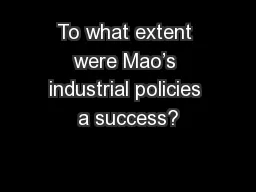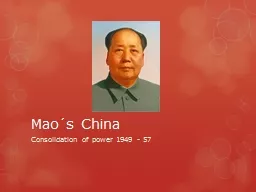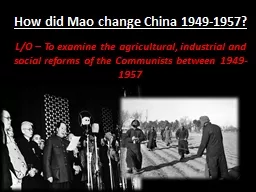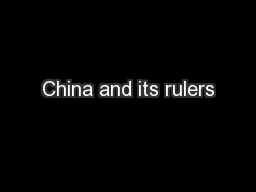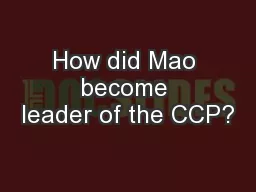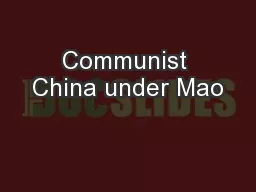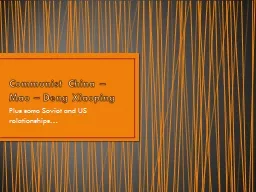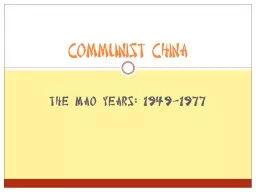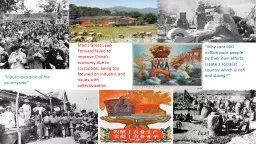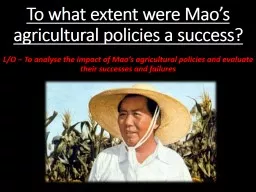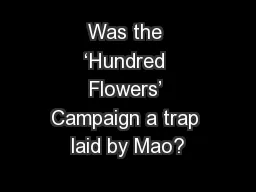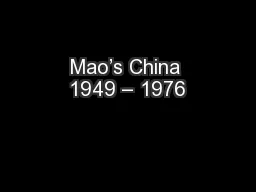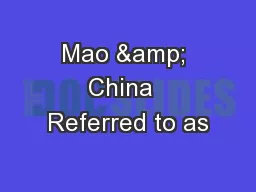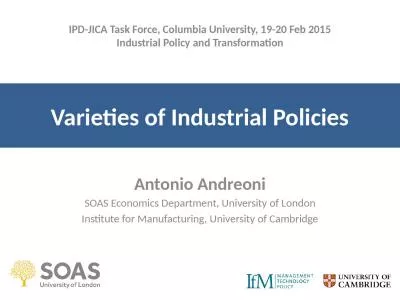PPT-To what extent were Mao’s industrial policies a success?
Author : lindy-dunigan | Published Date : 2018-11-06
LO To analyse the impact of Maos industrial policies and evaluate their successes and failures The CCP and Industry As a Marxist organisation the CCP was committed
Presentation Embed Code
Download Presentation
Download Presentation The PPT/PDF document "To what extent were Mao’s industrial p..." is the property of its rightful owner. Permission is granted to download and print the materials on this website for personal, non-commercial use only, and to display it on your personal computer provided you do not modify the materials and that you retain all copyright notices contained in the materials. By downloading content from our website, you accept the terms of this agreement.
To what extent were Mao’s industrial policies a success?: Transcript
Download Rules Of Document
"To what extent were Mao’s industrial policies a success?"The content belongs to its owner. You may download and print it for personal use, without modification, and keep all copyright notices. By downloading, you agree to these terms.
Related Documents

